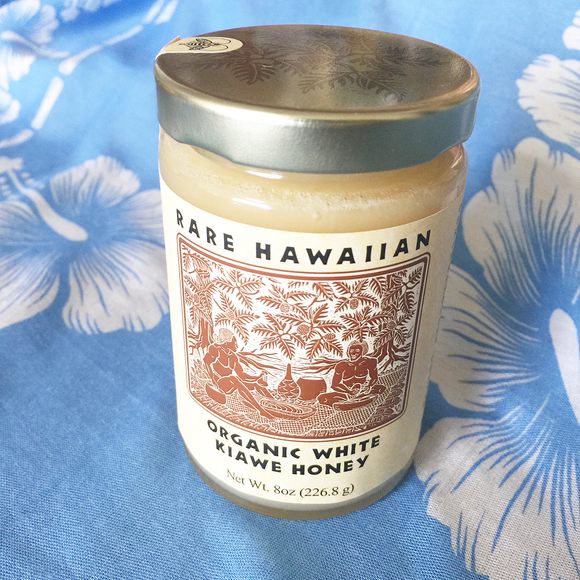Ingredients & Condiments
White Kiawe Honey
This pristine honey with a cool menthol aftertaste is produced by honeybees that feast on a Hawaiian mesquite forest.
The desert mesquite tree that Hawaiians call kiawe was never supposed to be on this volcanic island. Brought to Big Island (also known as Hawaiʻi) in 1828 by a Catholic missionary, the kiawe, which is native to Ecuador and Peru, thrives on the leeward side of the major Hawaiian islands. Wispy, elongated, lemon-yellow flowers hang from the trees in the island’s 1,000-acre Puako forest. Honeybees collect nectar from these abundant blooms to make the rare, award-winning kiawe honey.
The scant rainfall in Puako is enough for the trees to grow 60 feet tall. According to the United States Department of Agriculture, the trees can flower at any time of the year, providing plenty of sustenance for the island’s honeybees. Here, the bees forage, making the forest a natural bee habitat that is in danger from urban encroachment thanks to Hawaiʻi’s vibrant tourism industry.
The honey is 99 percent monofloral, meaning the bees making kiawe honey almost exclusively feed off the kiawe flower. The extraction process has to be precisely timed. If removed from the combs too early, the honey tends to ferment. If the beekeeper waits too long to extract, the honey crystallizes in the comb and needs to be melted by applying heat, which affects the natural, delicate floral flavors. The smooth, creamy texture of the honey, along with its white color, makes it truly unique. While some people say there’s an aftertaste of menthol, others hail kiawe honey for its vanilla-almond flavor tones. The honey keeps at room temperature for three to four months, after which it should be refrigerated.
The threats to kiawe honey are many. In 2007, a forest fire destroyed nearly half the kiawe trees in Puako, severely limiting honey production. That same year, the varroa mite wiped out large swathes of the island’s bee population. Keeping up a market demand for kiawe honey ensures the preservation of these kiawe tree groves, which are saltwater tolerant, and eminently capable of thriving on the Puako soil. Allowing them to flourish protects Big Island from the problem of desertification, and provides a habitat for the island’s bees. And who wouldn’t want a schmear of this creamy natural sweetener on their morning toast?
Where to Try It
-
Rare Hawaiian Honey Company Website
66-1250 Lalamilo Farm Road, Kamuela, Hawai'i, 96743, United StatesThe company website recommends calling before paying a visit. They do sometimes organize tours and lectures, so best to ask about those as well.
Written By
 Rohini Chaki
Rohini Chaki
Sources
- www.parkerranchstore.com/a-kiawe-forest-in-puako-the-terroir-behind-volcano-island-honey/
- bigislandnow.com/2016/10/07/kiawe-the-tree-of-life/
- www.slowfoodusa.org/ark-item/white-kiawe-honey-of-hawai-i
- www.fondazioneslowfood.com/en/ark-of-taste-slow-food/kiawe-honey-from-the-kiawe-tree/
- modernfarmer.com/2018/07/foods-can-be-endangered-too-here-are-9-that-need-our-protection/
- www.srs.fs.usda.gov/pubs/misc/ag_654/volume_2/prosopis/pallida.htm
- www.sciencedaily.com/releases/2019/01/190108181320.htm














